Related Research Articles

Francis Harry Compton Crick was an English molecular biologist, biophysicist, and neuroscientist. He, James Watson, Rosalind Franklin, and Maurice Wilkins played crucial roles in deciphering the helical structure of the DNA molecule.

James Dewey Watson is an American molecular biologist, geneticist, and zoologist. In 1953, he co-authored with Francis Crick the academic paper in Nature proposing the double helix structure of the DNA molecule. Watson, Crick and Maurice Wilkins were awarded the 1962 Nobel Prize in Physiology or Medicine "for their discoveries concerning the molecular structure of nucleic acids and its significance for information transfer in living material".

Max Ferdinand Perutz was an Austrian-born British molecular biologist, who shared the 1962 Nobel Prize for Chemistry with John Kendrew, for their studies of the structures of haemoglobin and myoglobin. He went on to win the Royal Medal of the Royal Society in 1971 and the Copley Medal in 1979. At Cambridge he founded and chaired (1962–79) The MRC Laboratory of Molecular Biology (LMB), fourteen of whose scientists have won Nobel Prizes.
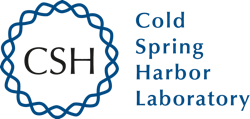
Cold Spring Harbor Laboratory (CSHL) is a private, non-profit institution with research programs focusing on cancer, neuroscience, plant biology, genomics, and quantitative biology. It is located in Laurel Hollow on Long Island, New York.
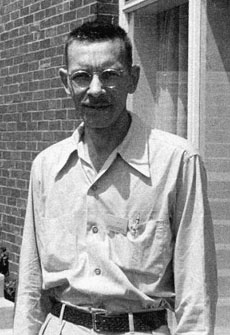
Alfred Day Hershey was an American Nobel Prize–winning bacteriologist and geneticist.
Milislav Demerec was a Croatian-American geneticist, and the director of the Department of Genetics, Carnegie Institution of Washington [CIW], now Cold Spring Harbor Laboratory (CSHL) from 1941 to 1960, recruiting Barbara McClintock and Alfred Hershey.
Tom Maniatis, is an American professor of molecular and cellular biology. He is a professor at Columbia University, and serves as the Scientific Director and CEO of the New York Genome Center.

Bruce Michael Alberts is an American biochemist and the Emeritus Chancellor’s Leadership Chair in Biochemistry and Biophysics for Science and Education at the University of California, San Francisco. He has done important work studying the protein complexes which enable chromosome replication when living cells divide. He is known as an original author of the "canonical, influential, and best-selling scientific textbook" Molecular Biology of the Cell, and served as Editor-in-Chief of Science magazine. He was awarded the National Medal of Science for "intellectual leadership and experimental innovation in the field of DNA replication, and for unparalleled dedication to improving science education and promoting science-based public policy" in 2014.
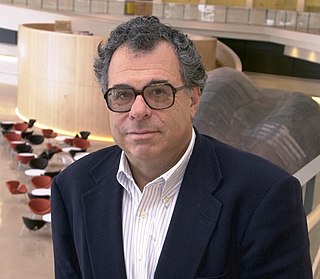
David Botstein is an American biologist who is the chief scientific officer of Calico. He was the director of the Lewis-Sigler Institute for Integrative Genomics at Princeton University from 2003 to 2013, where he remains an Anthony B. Evnin Professor of Genomics.
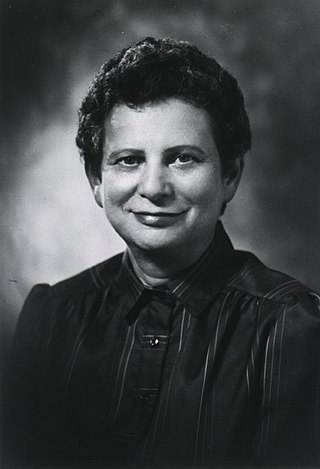
Elizabeth Fondal Neufeld is a French-American geneticist whose research has focused on the genetic basis of metabolic disease in humans.
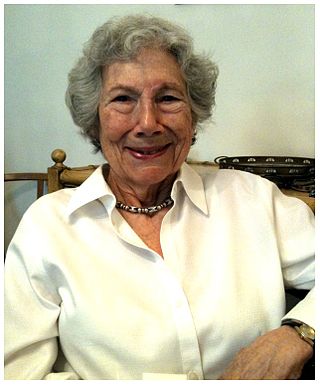
Evelyn M. Witkin was an American bacterial geneticist at Cold Spring Harbor Laboratory (1944–1955), SUNY Downstate Medical Center (1955–1971), and Rutgers University (1971–1991). Witkin was considered innovative and inspirational as a scientist, teacher and mentor.
Kathryn Wasserman Davis was an American investor, painter, philanthropist, and political activist. She was a longtime promoter of women's rights and planning parenthood. She was committed to engaging local communities, particularly regarding the environment on the Hudson River and Maine coast, and also concerned with access to high-quality education. At the age of 94, she began an artistic adventure, producing more than 200 paintings.

Charles Francis Dolan was an American billionaire businessman, best known as founder of Cablevision and HBO. Today, the Dolan family controls Madison Square Garden Sports, MSG Networks, Madison Square Garden Entertainment, Madison Square Garden, the Sphere, Radio City Music Hall, BBC America, and AMC Networks. As of December 2024, his net worth was estimated at US$5.4 billion.
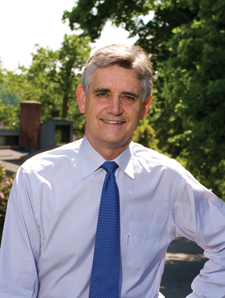
Bruce William Stillman is a biochemist and cancer researcher who has served as the Director of Cold Spring Harbor Laboratory (CSHL) since 1994 and President since 2003. He also served as the Director of its NCI-designated Cancer Center for 25 years from 1992 to 2016. During his leadership, CSHL has been ranked as the No. 1 institution in molecular biology and genetics research by Thomson Reuters. Stillman's research focuses on how chromosomes are duplicated in human cells and in yeast Saccharomyces cerevisiae; the mechanisms that ensure accurate inheritance of genetic material from one generation to the next; and how missteps in this process lead to cancer. For his accomplishments, Stillman has received numerous awards, including the Alfred P. Sloan, Jr. Prize in 2004 and the 2010 Louisa Gross Horwitz Prize, both of which he shared with Thomas J. Kelly of Memorial Sloan-Kettering Cancer Center, as well as the 2019 Canada Gairdner International Award for biomedical research, which he shared with John Diffley.

David L. Spector is a cell and molecular biologist best recognized for his research on gene expression and nuclear dynamics. He is currently a Professor at Cold Spring Harbor Laboratory (CSHL). From 2007 to 2023, he served as Director of Research of CSHL.
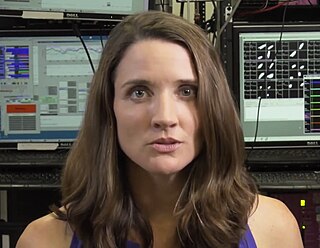
Anne K. Churchland is a neuroscientist at University of California, Los Angeles. Her laboratory studies the function of the posterior parietal cortex in cognitive processes such as decision-making and multisensory integration. One of her discoveries is that individual neurons in rodent posterior parietal cortex can multitask i.e. play a role in multiple behaviors. Another discovery is that rodents are similar to humans in their ability to perform multisensory integration, i.e. to integrate stimuli from two different modalities such as vision and hearing.
Gregory James Hannon is a professor of molecular cancer biology and director of the Cancer Research UK Cambridge Institute at the University of Cambridge. He is a Fellow of Trinity College, Cambridge while also serving as a director of cancer genomics at the New York Genome Center and an adjunct professor at Cold Spring Harbor Laboratory.

Adrian Robert Krainer is a Uruguayan-American biochemist and molecular geneticist known for his research into RNA gene-splicing. He helped create a drug for patients with spinal muscular atrophy. Krainer holds the St. Giles Foundation Professorship at Cold Spring Harbor Laboratory in Laurel Hollow, New York.
Leemor Joshua-Tor is the W.M. Keck Professor of Structural Biology at Cold Spring Harbor Laboratory and a Howard Hughes Medical Institute Investigator. Her research focuses on the role of the argonaute complex in RNA interference.
Victor King McElheny is an American science writer and journalist, who has covered a wide variety of topics, including the Apollo lunar landing program, molecular biology, astronomy, science in Antarctica, and environmental issues.
References
- ↑ Lee, Jasmine (November 18, 2021). "16th annual Double Helix Medals dinner raises $5M". Cold Spring Harbor Laboratory.
- ↑ Roncero-Menendez, Sara (November 25, 2020). "15th annual Double Helix Medals goes virtual". Cold Spring Harbor Laboratory.
- ↑ Roncero-Menendez, Sara (November 7, 2019). "14th annual Double Helix Medals dinner raises over $4 million". Cold Spring Harbor Laboratory.
- ↑ Roncero-Menendez, Sara (November 8, 2018). "13th Double Helix Medals dinner raises over $4 million". Cold Spring Harbor Laboratory.
- ↑ Roncero-Menendez, Sara (November 16, 2017). "12th Double Helix Medals dinner raises $4.5 million for research & education at Cold Spring Harbor Laboratory". Cold Spring Harbor Laboratory.
- ↑ Department, Communications (December 2, 2016). "11th Double Helix Medals raises $4.3 million for biomedical research and education at Cold Spring Harbor Laboratory". Cold Spring Harbor Laboratory.
- ↑ Department, Communications (November 10, 2015). "10th Double Helix Medals Dinner raises record $4.5 million for biomedical research at Cold Spring Harbor Laboratory". Cold Spring Harbor Laboratory.
- ↑ Department, Communications (November 13, 2014). "Double Helix gala raises record $4 million for biomedical research at Cold Spring Harbor Laboratory". Cold Spring Harbor Laboratory.
- ↑ Department, Communications (November 5, 2013). "Robin Roberts, Barry Scheck and Peter Neufeld honored at 8th annual Double Helix Medals Dinner". Cold Spring Harbor Laboratory.
- ↑ Department, Communications (November 30, 2012). "Cold Spring Harbor Laboratory honors innovation and inspiration at 7th Double Helix gala". Cold Spring Harbor Laboratory.
- ↑ Department, Communications (November 16, 2011). "Cold Spring Harbor Laboratory honors stars of science and sports at sixth annual gala". Cold Spring Harbor Laboratory.
- ↑ Department, Communications (November 11, 2010). "More than $3 million raised at Cold Spring Harbor Laboratory gala". Cold Spring Harbor Laboratory.
- ↑ Zeidlickis, Dagnia (November 12, 2009). "$2.8 million raised at 2009 Double Helix Medals dinner". Cold Spring Harbor Laboratory.
- ↑ Department, Communications (November 11, 2008). "$3.6 Million raised at Cold Spring Harbor Laboratory's 2008 Double Helix Medals Dinner". Cold Spring Harbor Laboratory.
- ↑ Department, Communications (November 21, 2007). "$3.1 Million Raised at Cold Spring Harbor Laboratory's 2007 Double Helix Medals Dinner". Cold Spring Harbor Laboratory.
- ↑ Department, Communications (November 9, 2006). "CSHL Raises $2.5 Million at Inaugural Double Helix Medals Event & Launches $200 Million Capital Campaign". Cold Spring Harbor Laboratory.